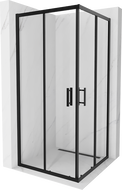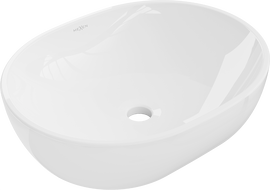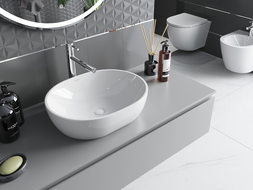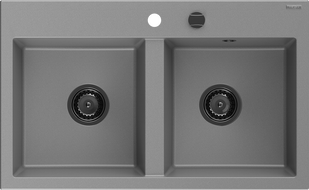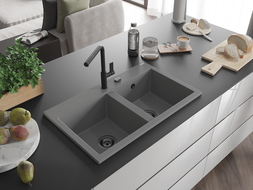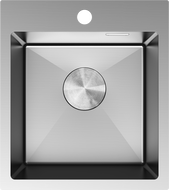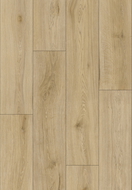
Cleaning radiators helps keep the house clean and ensures efficient operation of the heating system. Below is a professional guide on how to clean a radiator inside and out.
Step-by-step radiator cleaning
Read on to learn the correct way to clean radiators.
Preparation:
- turn off the heating - before proceeding with cleaning, ensure the heating is off and the radiator is cold;
- protect the floor - place a towel or painter's foil under the radiator to protect the floor from dirt;
- prepare necessary tools - you need a soft cloth, a brush with long bristles, a vacuum cleaner with a crevice tool, and in some cases, a mild cleaning agent.
Cleaning radiators - cleaning process
Here's how to clean a radiator outside and inside.
Cleaning radiators from the outside:
- dust removal - use a brush with long bristles to gently remove dust and other debris from the external parts of the radiator;
- cleaning the surface - wipe the external surfaces of the radiator with a damp cloth. For harder-to-remove dirt, you can use a mild detergent diluted with water;
- polishing - finally, wipe the radiator with a dry, soft cloth.
Cleaning radiators inside:
- vacuuming - use a vacuum cleaner with a crevice tool to remove dust and other dirt from inside the radiator. Focus on hard-to-reach places between the fins;
- brushing - for better results, use a brush with long bristles to reach areas the vacuum cleaner may not clean.
Cleaning radiators according to radiator type
Cleaning different types of radiators requires adjusting methods and tools to their specific structure and materials. Here's how to effectively clean finned, panel, and bathroom radiators.
How to clean a finned radiator?
Finned radiators are typical for older installations - they are coming back into favor for their retro style - with many recesses, making thorough cleaning difficult.
- Preparation - turn off the heating and place a towel or foil under the radiator to protect the floor;
- dust removal - use a brush with long bristles or a special radiator brush to reach hard-to-access spaces between the fins. You can also use a vacuum cleaner with a crevice tool;
- cleaning with a damp cloth - moisten a cloth in water with a mild cleaning agent and clean the space between the fins. You can use a long, flat cloth or a mop;
- drying - finally, wipe the radiator with a dry cloth to remove any remaining moisture.
How to clean a panel radiator
Room radiators have a smooth surface, making them easier to clean, but they may have narrow spaces that are hard to clean.
- Preparation - as with finned radiators, protect the floor and ensure the radiator is cold;
- vacuuming - use a vacuum cleaner with a crevice tool to remove dust from surfaces and narrow corners;
- wet cleaning - wipe the radiator's surface with a damp cloth. You can use a mild detergent or dishwashing liquid diluted with water. A steam mop is also effective for cleaning the radiators;
- polishing - use a dry cloth (preferably microfiber) to dry the radiator and give it a shine.
How to clean a bathroom radiator?
Bathroom radiators often also serve as dryers, meaning they are exposed to moisture and can accumulate more dirt.
- Preparation - ensure the radiator is off and cold. Protect the floor;
- removing dust and moisture - start by vacuuming, especially between horizontal pipes where dust and moisture can accumulate. Remember, dust settles faster in bathrooms mainly due to better ventilation in such rooms. Hence, dirt from the chimney can settle much faster in bathrooms;
- cleaning with a brush - use a brush with long bristles;
- washing - use a damp cloth with a mild cleaning agent to wipe external surfaces. For tough stains, specialized bathroom cleaning agents can be used carefully to not damage the radiator surface;
- drying and polishing - finally, dry the radiator to prevent streaks or stains.
Why clean radiators regularly?
Regularly washing radiators is essential for keeping the house clean. But that's not all. Learn the reasons for maintaining spotless radiators.
1. Increasing heating efficiency
Dust and dirt accumulating on and inside radiators can reduce system efficiency. A thick layer of dust acts as an insulator, limiting heat flow to the room. Regular cleaning allows better heat distribution and can reduce heating bills as the radiator will work more efficiently.
2. Improving air quality
Radiators full of dust and allergens can negatively impact indoor air quality. When the heat is on, air movement can spread dust particles and allergens throughout the home, which is particularly harmful to people with allergies, asthma, or other respiratory issues.
3. Extending the life of the heating system
Maintaining and caring for radiators are key to keeping them in good technical condition. Clean radiators are less prone to corrosion and other damage, which can extend their lifespan and prevent costly repairs or replacements.
4. Preventing mold growth
Moisture and dirt accumulating in the nooks of radiators create ideal conditions for mold and fungi growth, which are not only harmful to health but also difficult to remove. Regular cleaning helps prevent these problems.
5. Aesthetics and hygiene
Clean radiators contribute to the overall aesthetics and hygiene of rooms. Dirty, neglected radiators can negatively impact the home's appearance and residents' sense of comfort.
6. Protecting against unpleasant odors
Accumulated dust and dirt can emit unpleasant odors, negatively affecting the home's atmosphere.
Regular radiator cleaning - when and how often to clean radiators?
The frequency of cleaning radiators may depend on factors such as dust levels in the house or the presence of pets that may contribute to faster hair accumulation.
At least once per heating season - thorough cleaning of radiators is recommended at least once per heating season, preferably before it starts. This will remove dust and dirt accumulated throughout the year and ensure efficient heating operation for the entire season.
In homes with pets - if there are pets in the house, radiators should be cleaned more often, even every 2-3 months, to prevent fur and allergen buildup.
In areas with high dust levels - in places where the air dust level is high, such as due to proximity to roads, cleaning may be necessary monthly to maintain good indoor air quality.
For allergy sufferers - people with allergies should ensure more frequent cleaning of radiators to minimize allergens in the home.
The cleaning frequency of radiators depends on home conditions and residents' needs. Regular maintenance not only contributes to better heating system performance but also helps maintain a healthy environment in the home.
How to clean a radiator - summary
In summary, regular cleaning of radiators is important not only for energy efficiency and savings but also for residents' health, comfort, and the aesthetics of their surroundings.


